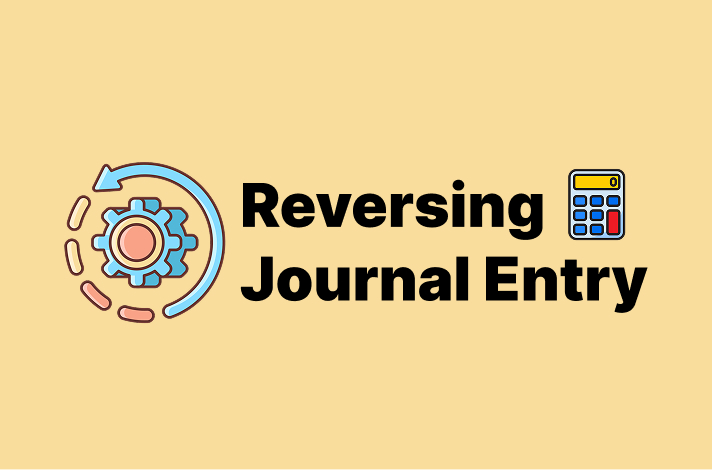A business must keep its financial records accurate. Sometimes, they don’t record transactions right away. This can lead to mistakes in financial reports. Adjusting journal entries fix these mistakes.
These entries help match revenues and expenses to the right time period. This follows the accrual method of accounting. It ensures that financial statements show the true financial health of a business.
In this article, you’ll learn what adjusting journal entries are, why they matter, and how to record them.
What Are Adjusting Journal Entries?
Accountants make adjusting journal entries at the end of an accounting period. These entries ensure that they record revenues and expenses in the correct period and follow the accrual basis of accounting.
The financial statements may be inaccurate or show income | expenses in the wrong periods if they didn’t use these adjustments.
They help businesses match revenues with related expenses and ensure financial reports reflect the true picture of a company’s financial health.
A business must keep its financial records accurate. But sometimes, transactions happen that aren’t recorded right away. This can lead to mistakes in financial reports. They fix these errors.
These entries help match revenues and expenses to the right time period. This follows the accrual method of accounting. It ensures that financial statements show the true financial health of a business.
In this article, you’ll learn what adjusting journal entries are, why they matter, and how to record them.
What Are Adjusting Journal Entries?
Accountants make adjusting journal entries at the end of an accounting period. These entries ensure that they record revenues and expenses in the correct period and follow the accrual basis of accounting.
The financial statements may be inaccurate or show income | expenses in the wrong periods if they didn’t use these adjustments. They help businesses match revenues with related expenses and ensure financial reports reflect the true picture of a company’s financial health.
This corrects any potential mistakes and keeps the records updated.
They might not record revenues and expenses in the right period. It would lead to misleading financial reports if companies didn’t use it.
In the following section, you will learn the types of adjusting journal entries.
Types of Adjusting Journal Entries
There are three main types of adjusting journal entries. Each one helps you to keep your financial records in check:
- Accruals
- Deferrals
- Estimates
Let’s take each one in-depth.
Accruals
These are revenues or expenses that a company has earned or incurred but has not yet recorded by the end of the accounting period. They ensure that the company recognizes income and expenses in the correct period.
- Accrued revenues: They are revenues that are earned but not received or recorded, for example, services provided but not billed.
- Accrued expenses are expenses that are incurred but not yet paid or recorded (wages owed to employees but not yet paid).
Deferrals
These involve revenues or expenses that the company has recorded in advance but needs to adjust to reflect the portion earned or used up during the period.
- Deferred revenues (unearned revenues): They are cash that is received in advance for services or goods not yet delivered, for example, prepaid subscriptions.
- Prepaid expenses: Payments made in advance for expenses that benefit multiple periods (e.g., prepaid insurance or rent).
Estimates
Accountants make these adjustments to account for items that cannot be precisely measured and require estimation.
- Depreciation: It is the allocation of the cost of a long-term asset over its useful life.
- Allowance for doubtful accounts: Estimation of uncollectible accounts receivable.
Let’s see how to record adjusting journal entries in the following section.
How to Record Adjusting Journal Entries
Recording the adjusting journal entries is a simple process. Follow these steps to make sure your financial records stay accurate:
- Identify accounts that need adjustments
- Determine the adjustment amount
- Prepare the journal entry
- Post the entry to the ledger
- Review financial statements
Here are the details:
You will need to seek unrecorded revenues earned, expenses incurred but unpaid, and prepayments to be adjusted.
These adjustments will ensure that accountants record each financial transaction in the appropriate accounting period.
Then, compute the amount to add or deduct for each of the accounts. This will require checking against several types of information, such as invoices, receipts, contracts, or other documentation to ensure accuracy.
Afterwards, each adjustment consists of a debit and credit. Debits increase expenses or decrease revenues, while credits increase revenues or decrease expenses.
One example is when a business has earned revenue for which payment has not yet been received. In this case, the business would debit accounts receivable and credit revenue. When an expense has been incurred but not yet paid, it would debit the expense account and credit accounts payable.
However, if a company has already collected an advance payment for a service that has yet to be delivered, it will debit unearned revenue and credit revenue upon completing the service.
For instance, if an expense is an insurance expense that should be prepaid, the company would debit the prepaid insurance account and credit the insurance expense account as time passes.
Once the journal entries have been prepared, the next step is to post the adjustments into the ledger. This entails updating the accounting records and the most recent information flowing through to the financial statements.
Finally, the financial statements will be checked to ensure that the adjustments have been done correctly.
Thereafter, the next step will be to have direct confirmation of the balances so that the company’s financial reports can accurately portray the company’s financial position before any finalization takes place.
Let’s see how to revers entries in the section below.
Reversing Entries
Accountants make the adjusting journal entries at the end of every accounting period to record revenues and expenses in the correct accounting period.
Following the accrual accounting principle, these adjustments help match income and expenses in the period in which businesses earn or incur them. Typical adjustments classify as:
- Accrued Revenue – Recording revenue that has been earned but not yet received.
- Accrued Expenses – Recording expenses incurred but not yet recorded.
- Prepaid Expenses – Charging expenses that are paid for future periods during a certain period.
- Unearned Revenues – Recognizing earned revenue from payments received before.
The depreciation and amortization expense allocates the costs of the assets during a period of time.
Accountants enter reversing entries voluntarily to simplify bookkeeping in a subsequent period. They make these reversing entries on the first day of a new accounting period to reverse the applicable adjusting journal entries made in the previous period. This helps avoid double-counting revenue or expenses when businesses make actual payments.
If any expense accrues by year-end, the reversal entry cancels it in the next period. In actual expense payment, businesses record the expense normally without duplication.
Accountants most commonly use reversal entries to reverse accrued amounts, thus allowing ease in bookkeeping.
Let’s see some examples in the section below.
Examples
Here are a few examples of adjusting journal entries:
Accrued Revenues
A company performs consulting services in December for $8,000, but the payment is received in January.
Adjusting Journal Entry (December 30):
| Date | Details | Debit | Credit |
|---|---|---|---|
| December 30 | Accrued Revenue | $8,000 | |
| Revenue | $8,000 |
Cash Receipt (January 10):
| Date | Details | Debit | Credit |
|---|---|---|---|
| January 10 | Cash | $8,000 | |
| Accounts Receivable | $8,000 |
Accrued Expenses
XYZ incurs a $3,000 utility bill for December, but the payment is made in January.
Adjusting Journal Entry (December 31):
| Date | Details | Debit | Credit |
|---|---|---|---|
| December 31 | Utility Expense | $3,000 | |
| Accrued Expenses | $3,000 |
Payment (January 5):
| Date | Details | Debit | Credit |
|---|---|---|---|
| January 5 | Accrued Expenses | $3,000 | |
| Cash | $3,000 |
Prepaid Expenses
FCLabor pays $12,000 for a 12-month insurance policy in January. The monthly expense will be recorded each month.
Initial Journal Entry (January 1):
| Date | Details | Debit | Credit |
|---|---|---|---|
| January 1 | Prepaid Insurance | $12,000 | |
| Cash | $12,000 |
Adjusting Entry (Monthly for January):
| Date | Details | Debit | Credit |
|---|---|---|---|
| January 31 | Insurance Expense | $1,000 | |
| Prepaid Insurance | $1,000 |
Wrapping Up
In this article, we discussed adjusting journal entries that are critical for businesses to maintain their financial records accurately, blessing the income and expenses attendant to a particular period. Most of the time, they are done at the end of an accounting cycle to update accounts for unrecorded or unpaid items.
The following types of adjusting journal entries were discussed:
- Accrued revenues: Recognizing revenue from services or goods that have been delivered but not yet paid for by the customer.
- Accrued expenses: Generally, expenses that have been incurred but have not yet been paid, such as utility bills or wages.
- Prepaid expenses: Accounted for advance payments for services or goods to be received in the future, for example, insurance or rent.
FAQ’s
What are adjusting journal entries?
How do accruals, deferrals, and estimates differ?
- Accruals: Revenues or expenses earned/incurred but not yet recorded.
- Deferrals: Amounts recorded in advance and adjusted later.
- Estimates: Adjustments for items that are not precisely measurable.



